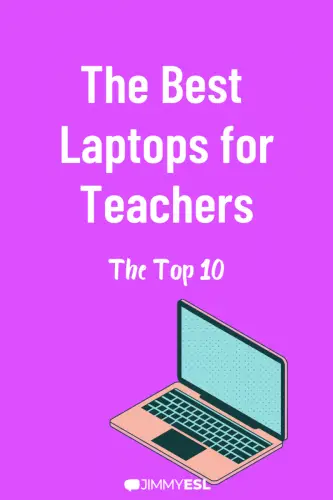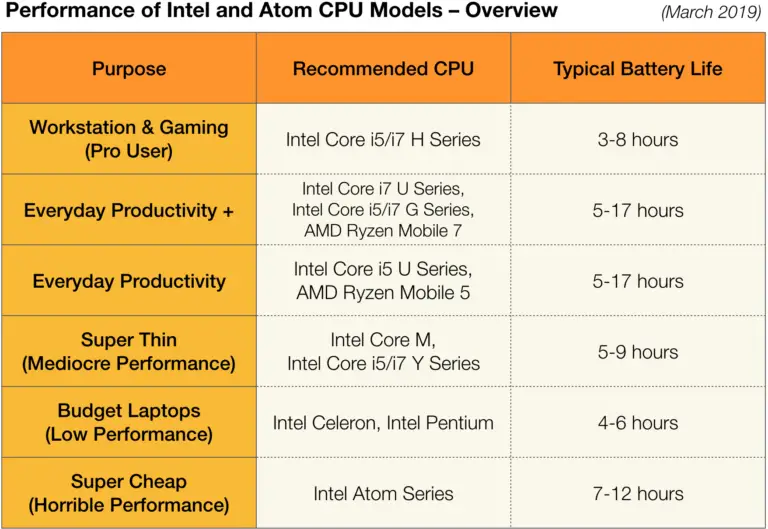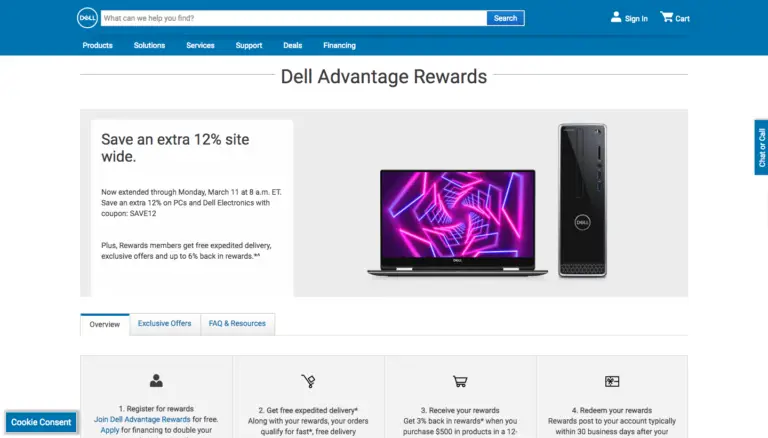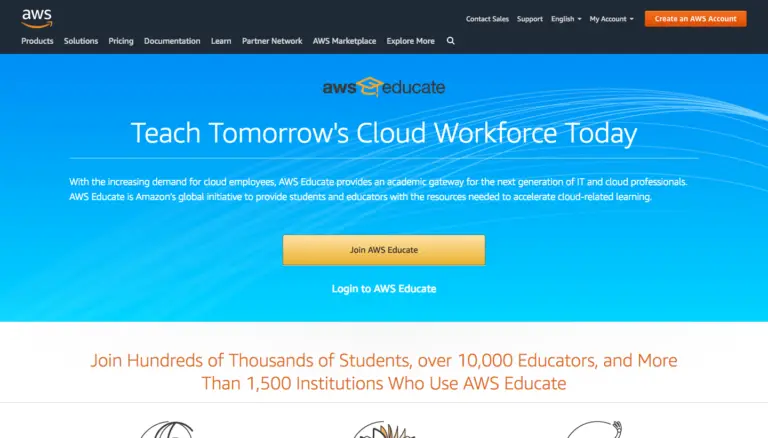For most teachers, the laptop is their #1 tool. They use it to draft their worksheets, show videos, and research lesson topics.
Are you about to buy a new one because your old one is broken or just no longer useful? Skip the arduous task of researching dozens of laptops and reading reviews full of technical mumbo-jumbo. We’ve already done the legwork for you!
Read on to learn what to look for when buying a laptop, and choose your favorite model from our convenient list of the best laptops for teachers.
Join our mailing list to receive a free ESL teaching resource every week.
We’re also giving you links to some truly amazing deals and discounts on laptops for teachers!

What Budget do You Need?
The truth is, there is no single best computer for teachers. We know that you want the best laptop you can buy, but you can’t always afford the very best laptops on the market — those things can get PRICY!
How can you know what budget you need?
Here are the four price ranges you have to know:
| Price Range | Purpose and Recommendation |
|---|---|
| Below $500 | Cheap; low performance and low durability; only for occasional users and simple tasks. |
| $500 to $800 | Mid-range; decent, reliable laptops for everyday office work. This your best choice if you only need a laptop for your paperwork and internet. |
| $800 to $1,300 | Business; high-quality laptops for professional everyday use. I recommend buying in this range when you use the laptop for teaching daily and your income depends on your laptop. |
| Above $1,300 | Pro; only for power users with high requirements, like professional video editors or graphic designer. |
Always consider the price tag in relation to the expected lifetime of a laptop: A $1,000 laptop that will last five+ years is “cheaper“ than a $400 model that breaks after a year. Furthermore, count in joy of use and everyday reliability, too.
If you use your laptop for online teaching, avoid cheap ones, as live video conferencing will demand a lot from your computer. You want to prevent getting bad ratings or even getting fired because of a bad connection. A budget of $800 or more is required then. Read this guide on the best laptop or computer for online teaching.
Consider, which features or attributes of the laptop you want to prioritize: Performance, display size, battery life, portability, or is it a great keyboard because you write a lot? These considerations will help you to decide on the model which is perfect for you.
Keep in mind also that you need to factor in more than just the base price of your computer when you’re comparing different options. Are you compromising on storage, camera quality, or other factors and planning on supplementing your computer with add-ons?
Make sure to factor in the price of dongles, external keyboards, cameras, hard drives, and mics, and any other add-ons you might be considering before deciding which computer is right for you.
With that in mind, we’ve curated a list of 10 laptops in three categories that are beneficial to teachers, so you can make a choice that fits your budget and gets the job done.
Read on to find some great laptops for teachers.
Recommended Features
- 13” or 15” display
- Processor; Intel Core i5 / AMD Ryzen Mobile 5 or 7 / Apple M1 / Microsoft SQ1
- 8 GB RAM or more
- 256 GB hard drive
Best All-rounder Laptops for Teachers
These four laptops should master all jobs in the classroom, in the office, and at home. With the recommended feature set, they all come with a price tag between $800 and $1,1200.
Lenovo Ideapad S540 (2019 model)
- 14″ IPS display with 1,920 x 1,080 resolution
- 512 GB SSD hard drive
- 12 GB RAM
- AMD Ryzen 7 CPU
- Lots of ports
- Windows 10 Home
2021 Newest Dell Inspiron 14 7000
- 2-in-1: use as laptop and tablet (convertible)
- 14″ touchscreen display with 1,920 x 1,080 resolution
- 512 GB SSD hard drive
- 16 GB RAM
- AMD Ryzen 5 CPU
- Lots of ports
- Windows 10 Pro
- Fingerprint Reader
2020 Apple MacBook Pro 13″ M1
- 13″ retina display with 2,560 x 1,600 resolution
- 256/512 GB SSD hard drive
- 8 GB RAM
- Blazing fast Apple M1 Chip
- Latest MacOS
- Fingerprint Reader
- Aluminum unibody case
2021 HP 17.3″ HD+ Touchscreen Laptop
- Large 17″ touchscreen display with 1,600 x 900 resolution
- 256/512/1024 GB SSD hard drive
- 12/16/32 GB RAM
- AMD Ryzen 5 CPU
- Windows 10 Home
- With numeric keypad
- 32 GB USB Drive included
Sleek and Ultra-Portable Laptops
If you’re a teacher, you’re probably on the go. Whether you’re running around from class to class or teaching online while you travel, you want a laptop that you can carry with you easily.
We’ve found two super-portable laptops that are deceptively powerful, so you don’t have to compromise on quality. In fact, these models are laptop-tablet hybrids; you can use them for both pruposes.
Note that these ultra-portables rely on Bluetooth connections and don’t have many ports, so you will need adapters to connect external (wired) devices.
Microsoft Surface Pro X
- 13″ touchscreen display with 2,880 x 1,920 resolution
- 256 GB SSD hard drive
- 8 GB RAM
- Microsoft SQ1 CPU
- Windows 10 Home
- Wi-Fi and LTE for mobile connectivity
- Keyboard and smart pen included
Lenovo Yoga 6
- 2-in1 convertible: use as laptop or tablet
- 13″ touchscreen display with 1,920 x 1,080 resolution
- 256/512 GB SSD hard drive
- 8 GB RAM
- AMD Ryzen 4000 Series Mobile Processor
- Windows 10 Home
2020 Apple MacBook Air M1
- 13″ retina display with 2,560 x 1,600 resolution
- 256/512 GB SSD hard drive
- 8 GB RAM
- Blazing fast Apple M1 Chip
- Latest MacOS
- Fingerprint Reader
- Aluminum unibody case
- 18 hours battery life
Budget Laptops for Teachers (Below $700)
If you only use your laptop occasionally for office work, and don’t need more than office software and internet browser, and don’t carry it around too often, you should not spend more than $800 for a laptop computer.
When you work with budget computers, you WILL notice some flaws, like having to wait a few seconds for programs to open. But, as mentioned, as an occasional user, this won’t bother you much.
When you don’t want to spend a lot of money, look into these budget options:
2022 HP Pavilion Laptop
- 15.6″ Anti-Glare IPS Display, with 1,920 x 1,080 resolution
- 256/512/1,024 GB SSD hard drive
- 8/16/32 GB RAM
- Intel Core i3 CPU
- Lots of ports
- Fingerprint Reader
- Windows 10 Home
2021 Newest Acer Aspire 5 Slim Laptop
- 15.6″ LED Display, with 1,920 x 1,080 resolution
- 128/256/512/1,024 GB SSD hard drive
- 8/12/20 GB RAM
- Intel Core i3 CPU
- Lots of ports
- Windows 10 Home
- Amazon Alexa
HP Chromebook 14 Laptop
- 14″ Display, with 1,366 x 768 resolution
- 32 GB eMMC hard drive
- 4 GB RAM
- Intel Celeron CPU
- Chrome OS
- very thin and lightweight
- Low performance, and only works with an internet connection!
Check our buying guide to the essential equipment for teaching online.
Laptops for Teachers: The Buying Guide
You can spend anywhere from $300 to upwards of $2.000 on a computer, and determine your decisions on specs like storage capacity, battery life, and a million other things you never even knew you had to worry about.
What does it all mean, and how do you sift through it all?
We’re about to go in-depth into all the different considerations you should take into account when figuring out the best laptops for teachers, why they matter, and what all those numbers mean.
I know that I always feel totally bewildered when I walk into the electronics store because I’m about to drop a ton of cash and I don’t know what anything means.
So I created this super simple list of laptop specs so you know what to look for in a computer and what questions to ask.
Armed with this, you’ll never feel lost in the electronics aisle again!
If you are looking for computers, especially for teaching online, read this guide.
Display Size
When shopping laptops, you can mainly choose between various display sizes. This table helps you to make a decision:
Below 13″: Ultra-Portable
Only buy a laptop with such a small screen when you need something very small. Consider, whether a tablet computer with a manual might not be a better option for you.
13″ to 16″ : Common size
Most laptops have 13″ to 16″ displays. Make your decision whether portability or screen size is more important for you.
13″ laptops almost fit in every bag. Note that cheaper 15″ laptops can already become clunky and heavy.
17″: (Too) Large
Laptops with 17″ displays are not very portable. Besides, large quality laptops are costly.
They’re good if you always work at the same place, but have absolutely no space for a desktop computer or an external screen; or if you often work from different locations and absolutely need a large screen. In any other situations, I would advise buying a smaller laptop and using an external second display when required.
Display Resolution
When deciding for a display size, you should always have the screen resolution in mind. The resolution is not only about image quality; how much fits onto your screen absolutely depends on the screen resolution.
When two differently sized screens have the same resolution, they offer the exact same space — only on the larger screen, all objects are bigger.
There’s an easy rule: Cheaper laptop = lower resolution.
| Common screen resolutions of 13″ to 15″ laptop displays | 1,366 x 768 pixels (low-res) 1,920 x 1,080 pixels (high-res) |
| Resolution of the 13″ MacBook retina display | 2,560 x 1,600 pixels |
That means, for example, a 13″ MacBook screen, will probably provide more space than a 15″ or even a 17“ display of a budget laptop.
Thus, it can totally make sense to invest a few hundred dollars more in the inner values of your laptop.
Performance
Your laptop’s performance is determined by its CPU (central processing unit), RAM, and general makeup. RAM, or random access memory, is basically your computer’s working memory: it saves what you’re working on currently and continuously so you don’t have to constantly be reloading pages and waiting around while your computer thinks.
Generally, you get what you pay for: more expensive computers almost always perform better than their cheaper counterparts.
See the chart below for more information about what kind of performance you should expect from a given processor:

If you’re using your computer mainly to do basic tasks like surfing the web, working in Microsoft, or making Skype calls, then you don’t need a really high-performance machine. Any average laptop with 4GB of RAM or more should serve you perfectly well.
If you use your computer for more advanced purposes like graphic design or video editing, however, or if you’re the kind of person who uses your laptop for 8 hours at a time, opens a gazillion applications, and expects everything to run super fast all the time, you’ll want a computer with higher performance–think at least 8GB of RAM and an Intel i5 CPU or above.
Battery Life
If you’re a classroom teacher, your computer’s battery life is extra important.
If you teach at a public school you may have to move to different classrooms throughout the day, and you may not always be guaranteed a convenient outlet.
You want a computer that can stay alive for more than a few hours while it’s being used so your PPT and entire lesson don’t go out the window in the middle of a class.
If you’re teaching online from your living room or in a training center or private school, battery life might not matter as much.
Just make sure you know what you’re getting into when you choose a computer and look at reviews about how the computer’s battery life is when it’s being used to play videos or show presentations.
Storage Type and Size
Almost any new laptop models are equipped with an an SSD (solid-state drive) hard drive, with a capacity of 128 GB up to 1 TB (1,024 GB).
The operating system and the basic software will already eat up 20 to 30 GB from your hard drive.
If you only want to store documents and images, and not many other media files, 128 GB could be sufficient,
However, you will need to clean up your hard drive from time to time to free up some space again. Or you can use an external hard drive or cloud storage (like Google Drive).
With 256 GB, you are on the safe side. This option should suffice the needs of most teachers. It provides enough space for movies, music, and other “hungry storage eaters”.
512 GB or 1 TB are oversized in my opinion, for office work. You only need them if you, for example, do things like video editing and have to save large amounts of raw material.
Ports and Connectors
When you buy your computer, you don’t want to get blindsided if you get home and realize that it only has one Thunderbolt port, you can’t charge your phone and your computer at the same time, and you’ll need to buy a dongle if you want to connect a USB or anything else for that matter.
The new MacBooks only have two USB-C ports. That means they’ll fit your computer charger, but you’ll need to buy a dongle to connect other USB-types, HDMI cords, Ethernet cords, and more.
An Apple brand dongle is costly, but you can find cheap off-brand ones, and buying a dongle (seriously, what a ridiculous name) will totally solve all your problems.
However, if you want to avoid dealing with one more cost addition or just another part to lug around, go for a computer with more built-in ports. Not every printer, document camera or microphone works wireless. So, it is more convenient to have enough ports when it comes to connecting to these devices.
Good Keyboard
A good keyboard is, to put it simply, a joy. If you have a good keyboard you probably won’t even notice it, but you’ll subtly enjoy the weight of the keys, their little clicks, the ease with which you type when you’re paying attention.
A bad keyboard, on the other hand, is a different story. You have to gnash the keys too hard to type, you make clicking sounds heard across the room, and you’re generally too annoyed to focus.
Of course, what kind of keyboard you like best (and how much it matters) are up to you. Just be sure to try out typing on the keyboard in the store to make sure you like it.
You can, of course, buy an external keyboard if you’ll be in one place all the time and you really want a computer with a keyboard you don’t like, but it’s generally much easier to just find a computer with a keyboard you like from the start.
Camera and Mic
A good built-in camera and microphone are super beneficial when you’re online tutoring, but neither is necessary. You can buy good externals microphones and cameras if the ones on your computer don’t cut it — and lots of people teach online seriously do.
However, you’ll probably be fine with the built-in camera on most computers these days just for starting out, and you’ll use the mic in your headphones anyway so the one in your computer doesn’t really matter.
So you can cross these off your list as things to worry about!
The only case in which your camera really matters is if you teach online and you plan on teaching from lots of different locations. An external camera is certainly not bulky to pack or hard to set up, but having a good internal camera and mic will take two items off your to-do list when you pack and set up to teach.
Durability and Robustness
You want a computer that’s quality, that won’t break when you spill one tiny drop of water near it or die within a year. You want a computer with a sturdy casing so that it doesn’t scratch or break easily.
As a rule of thumb, metal or hard plastic casings will serve you better than cheap plastic computer casings.
More expensive computers tend to have better casing than cheaper ones, as cheap laptops tend to be made of low-quality material that bends easily. Less expensive laptops also sometimes have gaps between the assembled casing parts, making the laptop more susceptible to damage from spills or jostling.
Business notebooks also tend to be more durable. For example, the MacBook has an aluminum unibody casing, meaning it’s super-stable and sturdy with no gaps between its parts (as there are no parts).
Keep in mind that no matter what kind of computer you get, it’s best to get a keyboard protector and laptop case to protect it — after all, your laptop is an investment and an important tool.
Warranty, Customer Service, and Guarantee
This last factor isn’t actually a part of your computer but is something you absolutely need to keep in mind when buying a laptop.
Make sure your computer has a good warranty, especially if you’re going with a more expensive model. Find out what the warranty covers and how long it lasts.
You might want to consider buying your laptop from a big chain, like an Apple store, if you’re leaving your home country — that way you’ll be ensured of customer service and the continuation of your warranty when you go abroad.
Teacher Discounts on Laptops
If you’re a teacher, you’re in luck: there are some really terrific computer discounts for teachers out there.
But be careful when you’re scanning all the great deals out there: lots of teacher discounts on laptops are only applicable to students and teachers at schools in the US, so you need to make sure you’re looking for a deal that actually applies to you before you start calculating your savings.
Below are a few teacher discounts on laptops that you can use! Read on for major savings.
Dell Advantage Rewards

This deal is actually for everyone. If you become a Dell Advantage Rewards member, you’ll receive up to 3% back on all purchases you make on Dell’s website–3% sounds small, but it can add up to a lot of money when you’re buying something expensive like, say, a laptop.
You’ll also get free expedited delivery as a Dell Rewards member. The membership is only for customers in the United States, however. So if you’re planning on leaving to teach abroad soon, snap up a good teaching laptop before you leave!
Amazon Educator Account

This discount takes a little more doing than some other savings accounts, but it’s seriously worth it. You need to create an Amazon Educator/Business account, which, like a Prime account, costs money — in this case, $167/year.
You’ll need to check whether you or the school you work for is eligible for this discount, but if your organization is eligible then there’s just one fee to pay for the organization — no individual costs!
Here are the perks: the program gives you tax exemptions on all purchases you make through your business account, on top of special discounts and free two-day shipping on orders of $49 or more.
Find out whether your school or organization is eligible for an educator account, and enjoy some amazing computer discounts for teachers!
Staples

This program is also only in the US, but it’s one that, again, anyone can be a part of.
If you apply for Staples Rewards you can get 2-5% back in rewards off all purchase you make in-store, as well as free next-day delivery on orders over $49.99. Which is great news, because if you’re buying a laptop I can safely guarantee you’ll be over that margin with room to spare.
If you teach from home in the US, you should really apply for a Staples Rewards account because you’ll also get rewards and incentives for recycling ink and toner at Staples. Hello, new classroom backdrop and teaching props!
This rewards program might not provide as good of savings as other programs, but you can enroll anytime, and it’s especially worth it if you do a lot of printing for your online ESL classes.
Happy Shopping!
Which laptop is best for you really depends on what kind of teacher you are, how much you’re money you’re trying to spend on a computer, and what features are best for you.
Use this guide to figure out which model is best for you so you can confidently buy a laptop that will help you teach to the best of your ability!
And of course, don’t forget to check out some of the snazzy computer discounts for teachers we’ve found.










Hi. My name is Mamura from Uzbekistan. I am 32 years old. I am graduated from UZSWLU in English philology. I have been worked as english language teacher for 8 years at High Schools and Vocational College.
Nice to meet you, Mamura! I hope the blog is helpful for you!